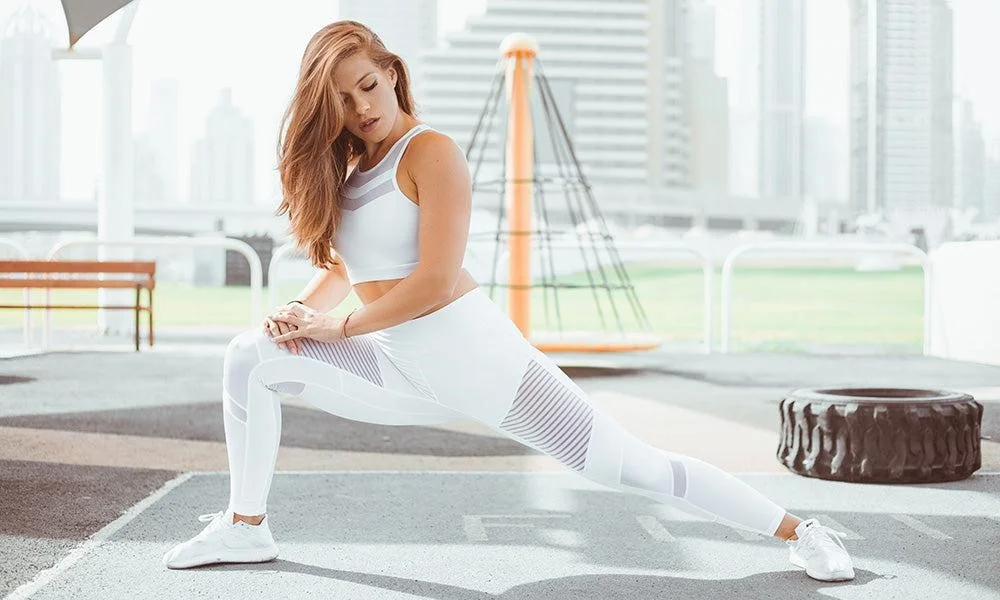There are very few things better for your health than staying active. Oh, but injuries! That can be annoying because they just drive a wedge in your workout. Luckily, most workout injuries can be easily avoided if done right. Focus on proper warm-up, recovery phase, and appropriate gym clothes, and you can build a training routine that keeps you strong and free from injury.
Common Workout Injuries & Their Causes
Before we discuss how to prevent injuries, let’s briefly look at some common injuries sustained probably during exercise:
- Stretched or overused muscles can suffer from small tears, causing pain and stiffness of the affected area, this is usually known as muscle strain. It can occur in any part of your body like shoulders, chest, legs etc.
- Twisting or overextending a joint can stretch or tear ligaments that are meant to stabilize the joint, and result in some pain and swelling.
- Shin splints are a pain along the shin bone mostly caused by running or jumping on hard surfaces that give little or no support.
- Repeated physical activity can result in some tendons being inflamed; this may occur particularly in the knees, shoulders, or elbows.
- Also, lower back pain is caused by poor form or lifting too much weight that overworks the lower back muscles.
Most of them happen because of improper warm-ups, form issues, or lack of recovery time. But with a few adjustments, you can prevent most of them.
How to Prevent Injuries During Workout
A Warm-up is Mandatory Before Every Workout
A proper warm-up allows your body to prepare for movement. It increases blood flow, raises flexibility, and dispels stiffness. If this is not kept in check, the muscles and joints may be in for a rude shock, making them ripe for injury.
Try these warm up exercises before any workout
- Arm Circles – Warm up those shoulders and arms.
- Leg Swings – To enhance hip mobility and flexibility.
- Jumping Jacks – Get your heart rate going and the muscles engaged.
- Dynamic Lunges – A leg stretch that kicks major muscle groups into action.
- Light Cardio (5–10 min.) – A jog or brisk walk helps get the body ready.
Using the Right Form
Bad form is one of the main causes of injuries while working out. Whether with weightlifting, running, or stretching, good technique allows for the even distribution of force throughout the entire movement, which in turn prevents unnecessary strain.
Here’s how to maintain a good from:
- Keep your back straight while lifting weights.
- Don’t lock your joints while doing exercises.
- Land softly when jumping to reduce impact on your knees.
- Engage your core to support your spine.
If you aren’t sure about your form, why not get a trainer to help, or use mirrors to check your posture?
Wear The Right Gear
What you wear during workouts is more important than you think. Uncomfortable, poorly fitting clothes can only inhibit your movement and increase the risk of injuries.

Supportive and appropriate activewear helps in controlling injuries by:
- Providing Stability: With high-support, the muscles are placed in a position where there are reduced strains on them when doing high-impact workouts.
- Enhancing Grip: By wearing sweat-wicking fabric, you would stay dry and not be distracted.
- Ensuring Flexibility: Easily stretchable materials provide full range motion that can greatly lessen the chances for muscle pulls.
Investing in quality performance gym wear that is made for comfort can make a difference in your training.
Recovery Should Be The Top Most Priority
Recovery is as important as exercise. Giving your body enough time to heal helps to prevent overuse injuries and boosts long-term performance.
Some recovery methods include:
- Stretching after workouts: helps to loosen up muscles and improve flexibility.
- Hydration: drinking water provides for muscle recovery and decreases muscle cramping.
- Proper nutrition: eating protein-rich foods facilitates muscle repair.
- Rest Days: taking at least one rest day per week allows your muscles to build back stronger.
- Massage and foam rolling: reduces tension and increases blood circulation.
Conclusion
True fitness is consistent and progressive in the long run. You are gearing up for success by properly warming up, utilizing the right form, and selecting supportive gym apparel. Such minor adjustments widen the gap between setbacks and sets you on the right path to achieve your fitness goals.
Whether a rookie or a veteran, injury prevention should be a priority always. You can train smart, recover better, and have a healthy, pain-free trek to fitness with the right approach.
Stay strong and injury-free with the right fitness approach. Keep training smart, and visit NextMagazine for more health tips!

